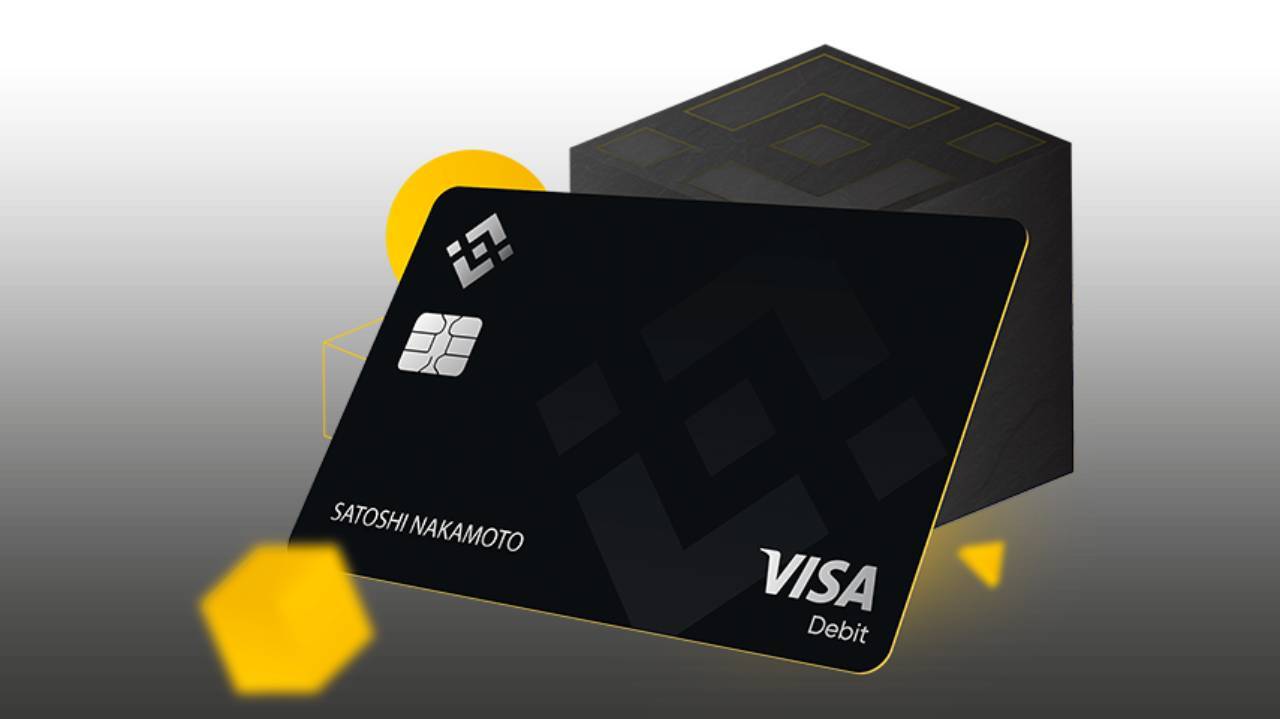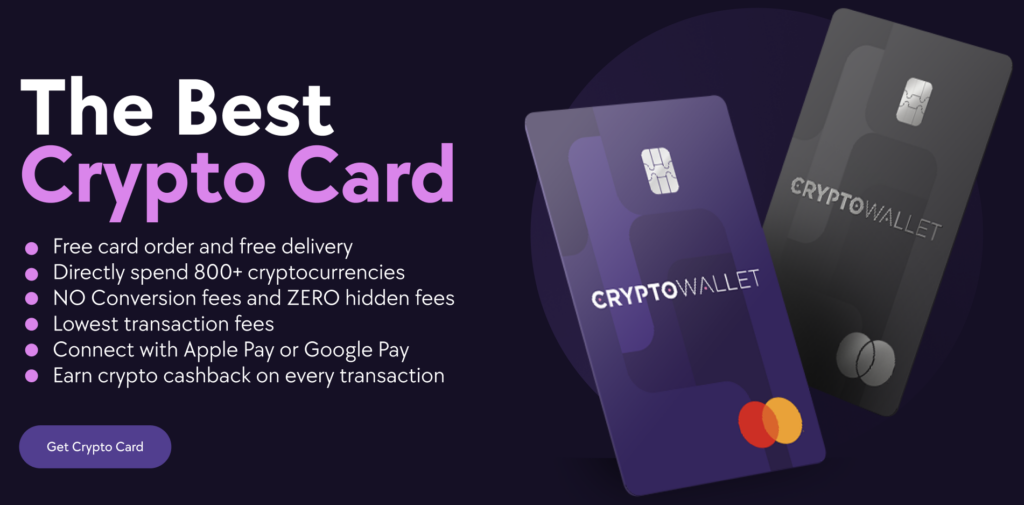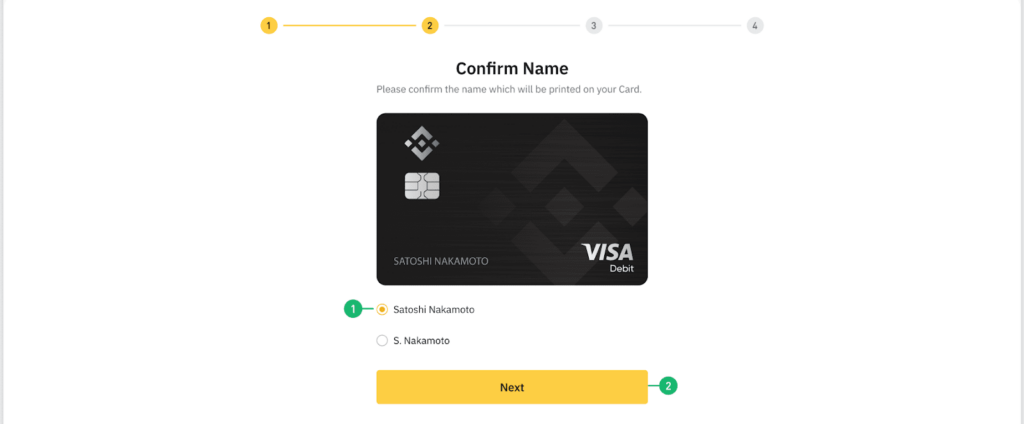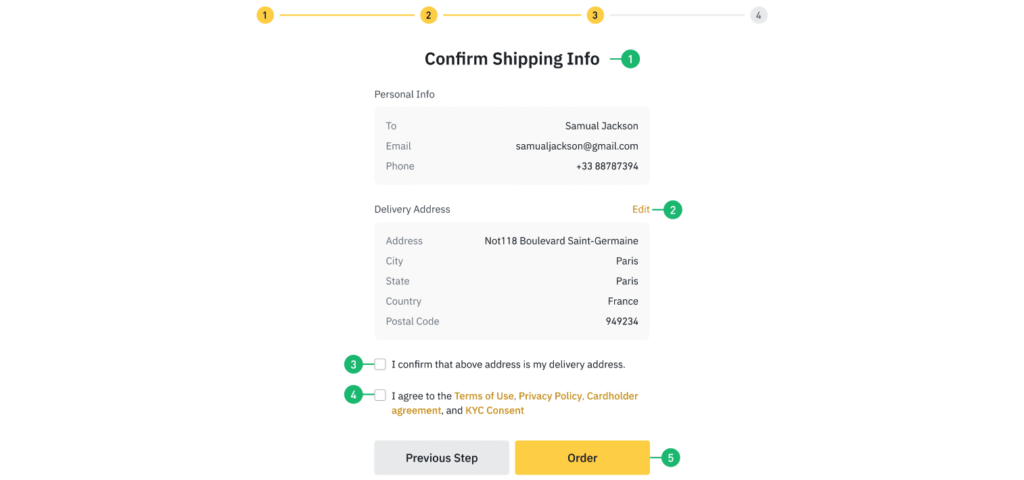
Binance Card Review: Fees, Limits & Alternatives
In an era where digital currencies are reshaping the way we envision finance, the Binance Card stands as a beacon of convenience and utility. This crypto debit card, backed by the world’s largest cryptocurrency exchange, Binance, seamlessly bridges the gap between the digital and physical worlds. Imagine savouring a meal at your favourite local restaurant or indulging in online retail therapy—all while tapping into the potential of your crypto holdings. The Binance Visa Card empowers you to do just that.
The Binance Crypto Card is meticulously crafted to elevate your crypto journey. With minimal transaction fees, generous withdrawal limits, and an ingenious cashback program that rewards you in Binance Coin (BNB), the Binance Card is capturing the attention of crypto enthusiasts worldwide.
Please Note: Binance Visa Debit Card Services to End in Europe by December 2023
Binance has announced its intention to terminate debit card services within the European Economic Area (EEA) on December 20, 2023. This official decision, disclosed in a statement on 20th October (Friday), will have no impact on Binance accounts.
As we delve into the depths of the Binance Debit Card, we’ll also explore alternatives like the CryptoWallet.com crypto card— a crypto card with the lowest transaction fees and supports a broader range of cryptocurrencies than most cards on the market.
Source: Binance Support Feed

In this Binance card review, we will answer some of your questions such as – Is Binance debit card free? What are the Binance card fees and limits? Is Binance Visa card worth it? How does it compare to other crypto cards on the market? In this comprehensive review, we embark on a journey to answer these inquiries and more, equipping you with the knowledge needed to make a well-informed decision.
What is a Binance Card?
The Binance Visa Card is a cryptocurrency debit card that offers a convenient way for users to spend their digital assets in the real world, just like they would with a traditional debit or credit card. It is powered by Binance, one of the largest and most prominent cryptocurrency exchanges globally, and it’s designed to bridge the gap between the world of cryptocurrencies and traditional fiat currencies.

With the Binance Visa Card, users can convert their digital assets, such as Bitcoin (BTC) and Binance Coin (BNB), into fiat currency (e.g., USD, EUR) and use the card for everyday purchases.
Binance Card Quick Summary
| 🌍 Availability | Available in US (Not available in Europe) |
| 💳 Features | A Visa debit card linked to your Binance account, available in physical and virtual cards for online and in-store purchases. |
| 💲 Cryptos | Binance Card supports the conversion and spending of BNB, BUSD, USDT, BTC, SXP, ETH, EUR, ADA, DOT, XRP, AVAX, SHIB, LAZIO, PORTO, and SANTOS. |
| 💰 Fees | Transaction fees can be up to 0.9%. No monthly card fees or minimum balance requirements. |
| 🤑 Cashback | Cashback rewards between 0% to 8% depending in the average BNB balance you hold in your Binance wallet |
| 🔒 Security | Requires 3D Secure Verification for online transactions. |
| 📱 App | The Binance Card comes with a mobile app for reviewing transactions and daily transfers. |
How Binance Debit Card Works?
The Binance crypto card is a crypto debit card that works much like a regular bank card in some ways.
The Binance debit card is connected to a user’s Binance account. Binance cards can be funded with 14 cryptocurrencies, offering flexibility for users who hold different digital assets.
To use the Binance card, you simply add crypto into your “funding wallet” (which can be found within your Binance account). You can either do this by transferring crypto from your “spot” “margin” or “earn” wallet, or by directly depositing cryptocurrencies from external wallets.

If you use the card to pay for 50 EUR worth of groceries, for example, Binance sells 50 EUR worth of crypto (for example BTC) and uses the 50 EUR worth of fiat to pay for the groceries.
The process takes the same amount of time as paying with a regular debit card. Users can also withdraw crypto as cash from any ATM.
The card is compatible with popular digital wallets like Google Pay and Samsung Pay, enhancing its flexibility and ease of use. However, the Binance Visa Card is not compatible with Apple Pay.
Binance Card Fees
First, let’s dive straight into the fees associated with the Binance card. Here’s a breakdown
| Transaction fees (within Europe) | 0.9% |
| Foreign transaction fee (outside of Europe) | 2% per transaction |
| Card issue fee (first) | 0 |
| Reissuance of the physical card | 25 EUR |
| Inactive account (12 months) | 0 |
| Account closure | 0 |
| ATM withdrawal fee (within Europe) | 0.9% per withdrawal |
| ATM withdrawal fee (outside of Europe) | 2% per withdrawal |
Please note that Binance claims to have ZERO transaction fees (within Europe), however, there is a hidden fee on crypto conversion that contributes to the overall transaction costs.
When you use your Binance card for payments, your cryptocurrencies are converted into fiat currency. This conversion incurs a crypto conversion rate (or hidden markup), which can be as high as 0.9%.
Transaction fees may be much higher if third-party fees are applied.
Binance Card Limits
Let’s quickly break down the daily spending limits associated with the Binance Crypto Card
| Virtual Card (EEA) | 870 EUR |
| Physical Card (EEA) | 8,700 EUR |
| ATM withdrawal | 290 EUR |
| Amount per contactless transaction | 50 EUR (across Europe) |
| Total contactless payments limit | 150 EUR |
The spending limits are much higher if you use the Binance physical card rather than the Binance virtual card which is understandable.
Binance Debit Card Cashback
The Binance crypto card offers cashback for every purchase made with the card. By holding sums of Binance’s native BNB token, users can increase the amount of cashback they receive from 0.1% all the way to 8%.
| Card Level | BNB Monthly Average Balance* | Cashback on Your Purchases |
| 1 | 0 | 0.1% |
| 2 | 1 | 2% |
| 3 | 10 | 3% |
| 4 | 40 | 4% |
| 5 | 100 | 5% |
| 6 | 250 | 6% |
| 7 | 600 | 8% |
The sum of the average BNB held per month required to receive 8% cashback is worth around 125,000 EUR at the time of writing.
Supported Cryptocurrencies
The lack of supported cryptos is a significant drawback for Binance.
Binance Card supports 14 cryptos, namely: Binance (BNB), Binance USD (BUSD), Tether (USDT), Bitcoin (BTC), Ethereum (ETH), Swipe (SXP), Cardano (ADA), Polkadot (DOT), Ripple (XRP), Avalanche (AVAX), Shiba Inu (SHIB), Lazio (LAZIO), Porto (PORTO), and Santos (SANTOS). Additionally, the Binance debit card accommodates fiat currency (EUR).
This is a very limited selection, which may be a turnoff for users with big portfolios or altcoin holders and miners looking to cash out gains.
In contrast, the CryptoWallet.com Card sets itself apart by supporting an extensive list of over 800 cryptocurrencies, surpassing the offerings of any other crypto card available in the market.

Binance Card Supported Countries
Binance has announced its intention to terminate debit card services within the European Economic Area (EEA) on December 20, 2023. This official decision was disclosed in a statement by Binance on 20th October. However, it will have no impact on Binance accounts.
Binance crypto card is not accessible to residents of the United Kingdom (UK).
The card is still available in the US along with other supported countries.
How to Order Binance Card?
Getting your hands on a Binance debit card is a straightforward process, but it does require a few steps to ensure a smooth experience. Whether you’re new to Binance or an existing user, here’s how you can order your very own Binance Visa Card:
- If you’re not already a Binance user, you’ll need to create an account first.
- Begin by applying for the Binance Visa Card on the official website.

- You’ll be redirected to the Binance Debit Card’s order page, where you can select how your name will appear on the card. Once you’ve made your choice, click “Next” to proceed.

- The next step involves creating a PIN for your Binance Crypto Card. Keep in mind two important security guidelines: Avoid using four consecutive numbers like 1234 or 6789, and refrain from using sequences such as 7777. If you choose to skip this step, your PIN will be auto-generated, but you can later modify it using an ATM.

- After generating your PIN, you’ll need to confirm the delivery address for the card. Binance typically pre-fills the address with the one you provided during registration on the exchange’s website. Make sure to review the details carefully and add any missing information if necessary.

- Confirm all your details and agree to the Terms of Use, Privacy Policy, Cardholder Agreement, and KYC consent.
- To finalize the process, click “Order.”
Depending on your country of residence, the Binance Visa Card typically takes about 1-3 weeks to be delivered. However, if you’re eager to start using your Binance Card, you can link it to Google Pay and Samsung Pay for added convenience.
Binance Card Alternatives
With the card unavailable for new orders and major card issuers cutting ties, it might be time to look into new alternatives for the Binance debit card. No Binance card review would be complete without an alternative product, and we’re going to suggest our own: The CryptoWallet.com crypto card.
The CW Crypto Card is due to launch in Q4 2023, and where Binance supports 15 cryptos, our card supports 800 digital assets. This is by far the widest selection of cryptos on the market, and we’re offering the lowest fees on the market to go along with it.
The CW Crypto Card has cashback of up to 3%,

Like the Binance card, the CW card supports direct spending of crypto with no conversion necessary on the user end. Users can also freeze native SPEND tokens for rewards and to unlock higher tiers of card service.
Our whitelist is open for business – if you want the crypto card with the most cryptos and lowest fees on the market, sign up now and get ready to order your card!
Binance Card FAQs
Is Binance debit card free?
The issuance of the Binance Visa Card is generally free. Here is a quick breakdown of fees associated with the Binance Visa Card
– There is a 0.9% fee on card transactions and ATM withdrawals within Europe.
– For transactions and ATM withdrawals outside of Europe, the fee is 2%.
– It’s important to note that third-party fees may apply in addition to these transaction fees.
– The Binance Card does not have monthly fees or minimum balance requirements.
Is Binance Visa card worth it?
Let’s be clear – the Binance card is a good crypto card but certainly not the best crypto card in the market.
The main advantage of the Binance debit card is that there are no monthly fees, and no issuance fee. The major drawback of the card is the hidden Crypto Conversion Fees and limited cryptocurrency support.
While Binance states zero transaction fees within Europe, there’s a concealed fee associated with crypto conversion, potentially as high as 0.9%. This fee contributes to overall transaction costs. The Binance card supports only 14 cryptocurrencies, which may not suffice for users with diverse crypto portfolios or those holding lesser-known altcoins.
Moreover, To enjoy the highest cashback rate of 8%, users must maintain a substantial average balance of 600 Binance Coins (BNB), equivalent to approximately 125,000 EUR. This may not be attainable for all users.
As an alternative, the CryptoWallet.com card offers lower transaction fees and supports over 800 cryptocurrencies directly from your wallet. This option may be more appealing for users with a broader range of crypto assets.
What is the daily limit on the Binance card?
The Binance debit card has fairly decent daily spending limits for the average user. Virtual cards offer 870 EUR limits, while the physical card can spend up to 8,700 EUR per day. The daily limit for ATM withdrawals is 290 EUR, which is a little low, but similar to many other fiat bank card services.
Contactless transactions are limited to 50 EUR per transcation in Europe, with 150 EUR in contactless payments allowed per day. This is a security measure taken for many payment cards to prevent losses in the event that your card is stolen.
How do I put money on my Binance card?
To load money onto your Binance Card, you can follow these general steps:
– Sign in to your Binance account.
– Transfer funds from your Spot wallet to your Funding wallet. If you don’t have cryptocurrency funds in your Spot wallet, you can purchase cryptocurrencies using a credit card or through a P2P marketplace.
– Once the cryptocurrencies are moved to your Funding wallet, you can begin using them with your Binance Card.
– Your Funding Wallet may contain multiple cryptocurrencies, so be sure to select your preferred cryptocurrencies for spending.
– If your Funding wallet is empty, your Spot wallet will be used as the default source for funding your Binance Card transactions.
How do I get a Binance card?
To obtain a Binance card, please follow these steps:
– If you don’t already have a Binance account, you’ll need to create one.
– Apply for the Binance Visa Card by visiting the official website.
– Choose how your name will appear on the card.
– Set a PIN for your Binance Crypto Card.
– Confirm the delivery address for the card.
– Confirm all your details
– Agree to the Terms of Use, Privacy Policy, Cardholder Agreement, and KYC consent.
– To complete the process, click “Order.”
Does Binance card work in Europe?
The Binance debit card is available for use in Europe, specifically in the EEA (European Economic Area) countries listed, with the exception of the United Kingdom (UK). Residents of the EEA countries you mentioned can use the Binance card for their cryptocurrency transactions.
Here is the list of supported countries in Europe:
Austria, Belgium, Bulgaria, Croatia, the Republic of Cyprus, the Czech Republic, Denmark, Estonia, Finland, France, Germany, Gibraltar, Greece, Hungary, Iceland, Ireland, Italy, Latvia, Liechtenstein, Lithuania, Luxembourg, Malta, the Netherlands, Norway, Poland, Portugal, Romania, Slovakia, Slovenia, Spain, and Sweden.
What is the disadvantage of Binance card?
The Binance crypto card has some disadvantages that you should be aware of:
Hidden Crypto Conversion Fees: While Binance advertises zero transaction fees within Europe, there can be hidden fees associated with crypto conversion when you use the card. These conversion fees can be as high as 0.9%, which can add to the overall transaction costs.
High BNB Balance Requirement for Cashback: To claim the maximum 8% cashback on your card transactions, you need to maintain a relatively high balance of approximately 600 Binance Coin (BNB).
Unavailability in the UK: The Binance card is not available to residents of the United Kingdom (UK). If you are located in the UK, you won’t be able to apply for or use the Binance debit card.
Is there a monthly fee for the Binance card?
Binance did not charge a monthly fee for the Binance Card. Ordering the first card is also free, however, there is a 25 EUR fee to reissue the card.
Additionally, there were no prerequisites for maintaining a minimum balance or inactivity fee.
Is the Binance card really free?
Binance claims to have ZERO transaction fees (within Europe), however, there is a hidden fee on crypto conversion that contributes to the overall transaction costs. Additionally, the transaction fees may be much higher if third-party fees are applied.
When you use your Binance crypto card for payments, your cryptocurrencies are converted into fiat currency. This conversion incurs a crypto conversion rate (or hidden markup), which can be as high as 0.9%.